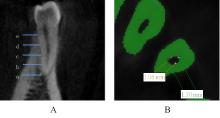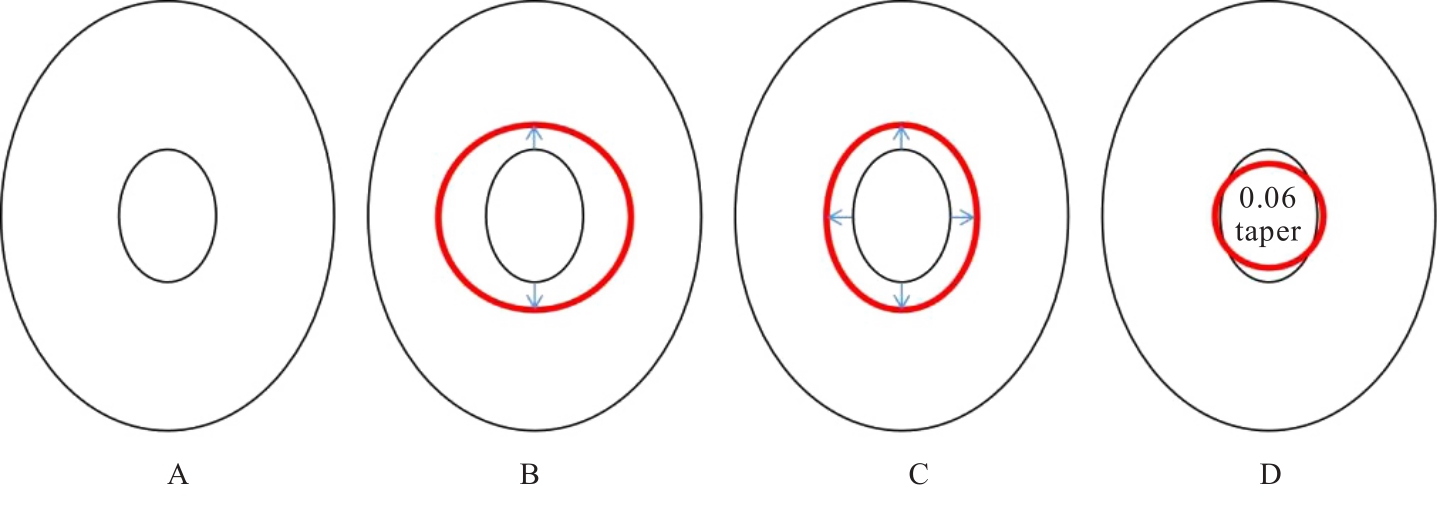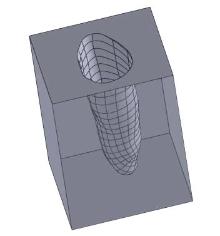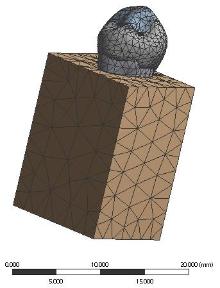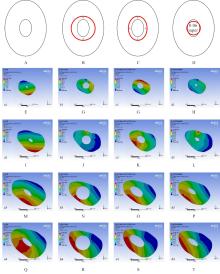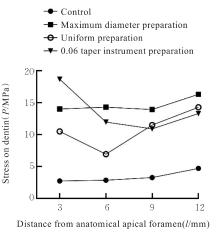| 1 |
周学东. 牙体牙髓病学[M]. 5版. 北京: 人民卫生出版社, 2020.
|
| 2 |
YOSHINO K, ITO K, KURODA M, et al. Prevalence of vertical root fracture as the reason for tooth extraction in dental clinics[J]. Clin Oral Investig, 2015, 19(6): 1405-1409.
|
| 3 |
COHEN S, BERMAN L H, BLANCO L, et al. A demographic analysis of vertical root fractures[J]. J Endod, 2006, 32(12): 1160-1163.
|
| 4 |
PAN X, TANG R, GAO A T, et al. Cross-sectional study of posterior tooth root fractures in 2015 and 2019 in a Chinese population[J]. Clin Oral Investig, 2022, 26(10): 6151-6157.
|
| 5 |
LIAO W C, CHEN C H, PAN Y H, et al. Vertical root fracture in non-endodontically and endodontically treated teeth: current understanding and future challenge[J]. J Pers Med, 2021, 11(12): 1375.
|
| 6 |
MUNARI L S, BOWLES W R, FOK A S L. Relationship between canal enlargement and fracture load of root dentin sections[J]. Dent Mater, 2019, 35(5): 818-824.
|
| 7 |
INCEYUSUFOGLU S, SARICAM E, OZDOGAN M S. Finite element analysis of stress distribution in root canals when using a variety of post systems instrumented with different rotary systems[J].Ann Biomed Eng, 2023:1-13.
|
| 8 |
YUSUFOGLU S I, SARICAM E, OZDOGAN M S. Finite element analysis of stress distribution in root canals when using a variety of post systems instrumented with different rotary systems[J]. Ann Biomed Eng, 2023, 51(7): 1436-1448.
|
| 9 |
CHAN C P, LIN C P, TSENG S C, et al. Vertical root fracture in endodontically versus nonendodontically treated teeth: a survey of 315 cases in Chinese patients[J]. Oral Surg Oral Med Oral Pathol Oral Radiol Endod, 1999, 87(4): 504-507.
|
| 10 |
PETERS L B, WESSELINK P R, BUIJS J F, et al. Viable bacteria in root dentinal tubules of teeth with apical periodontitis[J]. J Endod, 2001, 27(2): 76-81.
|
| 11 |
赵信义, 孙皎,包崇云, 等. 口腔材料学[M]. 5版. 北京: 人民卫生出版社, 2012.
|
| 12 |
HOLMES D C, DIAZ-ARNOLD A M, LEARY J M. Influence of post dimension on stress distribution in dentin[J]. J Prosthet Dent, 1996, 75(2): 140-147.
|
| 13 |
RUBIN C, KRISHNAMURTHY N, CAPILOUTO E, et al. Stress analysis of the human tooth using a three-dimensional finite element model[J]. J Dent Res, 1983, 62(2): 82-86.
|
| 14 |
LANZA A, AVERSA R, RENGO S, et al. 3D FEA of cemented steel, glass and carbon posts in a maxillary incisor[J]. Dent Mater, 2005, 21(8): 709-715.
|
| 15 |
李 锐, 付昊杰, 孙晶晶, 等. 处理牙本质基质浸提液对牙髓干细胞成牙分化的影响[J]. 郑州大学学报(医学版),2023, 58(3): 310-315.
|
| 16 |
RUNDQUIST B D, VERSLUIS A. How does canal taper affect root stresses?[J]. Int Endod J, 2006, 39(3): 226-237.
|
| 17 |
袁建桥, 陈 斯, 牛龙龙, 等. 生理性支抗技术在牙性前突拔牙矫治中的磨牙支抗控制效果[J]. 郑州大学学报(医学版), 2023, 58(4): 516-520.
|
| 18 |
SABETI M, KAZEM M, DIANAT O, et al. Impact of access cavity design and root canal taper on fracture resistance of endodontically treated teeth: an ex vivo investigation[J]. J Endod, 2018, 44(9): 1402-1406.
|
| 19 |
高小洁, 徐维宁. 2种不同根管预备技术与牙根纵折的原因分析[J]. 上海口腔医学, 2012, 21(3): 321-324.
|
| 20 |
王 梓, 许婉倩, 薛 明. 根管机械预备与牙本质微裂[J]. 中国实用口腔科杂志, 2021, 14(2): 138-142.
|
| 21 |
王 雯, 王鹏来, 谢妮娜, 等. 不同器械预备根管对隐裂性牙髓炎临床治疗效果的影响[J]. 口腔医学, 2019, 39(5): 427-431.
|
| 22 |
TAHA N A, OZAWA T, MESSER H H. Comparison of three techniques for preparing oval-shaped root canals[J]. J Endod, 2010, 36(3): 532-535.
|
| 23 |
VERSLUIS A, MESSER H H, PINTADO M R. Changes in compaction stress distributions in roots resulting from canal preparation[J]. Int Endod J, 2006, 39(12): 931-939.
|
| 24 |
KIM H C, LEE M H, YUM J, et al. Potential relationship between design of nickel-titanium rotary instruments and vertical root fracture[J]. J Endod, 2010, 36(7): 1195-1199.
|
 )
)
